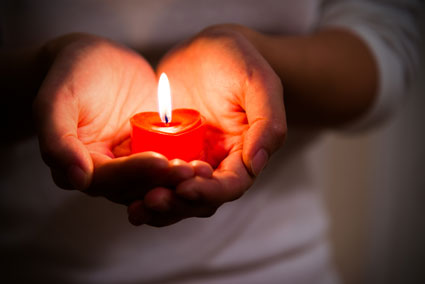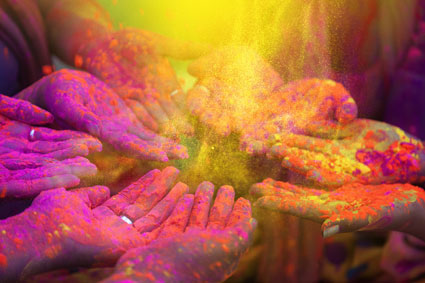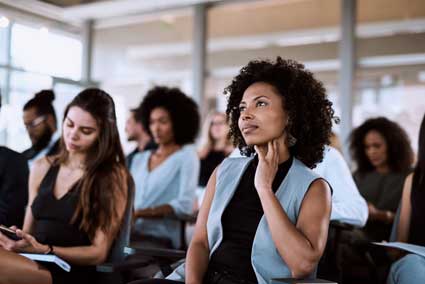One of the advantages of iPhone photography is the camera's popularity. With so many people using the iPhone for photography, there are plenty of businesses developing apps to expand from the native camera app's versatility. But apps aren't the only way to expand the iPhone camera's capabilities-welcome to the world of iPhone accessories.
One of the iPhone's biggest limitations is the fixed lens-but a simple accessory can change that. iPhone lenses attach to the front of the smartphone's built-in lens. If you are looking for a way to get more versatility from your iPhone camera, look at a lens kit.
Lenses come in different types based on their purpose:
Telephoto lenses bring a far subject in closer. Unlike the digital zoom on the iPhone, a telephoto lens uses physical pieces of glass to zoom, which means there's no loss in resolution. Telephoto lenses are nice to have for shooting action, active kids, wildlife or simply having more options for your composition. How much zoom the lens offers is indicated with each lens-a 2x will bring objects twice as close.
Macro lenses allow the camera to focus on a subject that's extremely close to the camera. The iPhone by itself needs to be about two inches from an object in order to be able to focus. A macro lens allows you to get in even closer. Macro lenses are designated by the number of times they'll magnify the subject-like 7x or 21x.
Wide angle lenses are the opposite of a telephoto lens-instead of zooming in, a wide angle lens zooms out from the iPhone's fixed lens, allowing you to capture a wider view. Wide angle lenses are ideal for taking landscape photographs, or any other scenario where you can't quite see all the details in one frame. Wide angle lenses don't get you the extreme of a panorama, but they also eliminate the perspective errors common when stitching multiple photos together for a wider view. A 2x wide angle lens captures twice the view that you normally see without a lens at all.
Fisheye lenses are even wider than a wide-angle lens. These lenses actually capture a wider view than the human eye. But because of how wide the image is, a fisheye lens creates a distorted image. Lines that are straight in real life will start to curve at the edges. There are two types of fisheyes-one that captures a square image, and ones that create a circular image. The fisheye lenses create a distorted image, so do a quick internet search to see if you like the fisheye style before you invest in one.
Circular Polarizing Lenses (CPL) are a bit different. A CPL for a DSLR is actually a filter, not a lens. So what does a CPL do? A polarizer allows you to adjust reflected light. Turning the polarizing lens will enhance or reduce reflections-such as the reflections off water or glass. But a polarizer will actually enhance the blues of the sky because of how light reflects in the sky. If you want to get creative with your reflections or get the sky in your landscapes to pop, a CPL is an excellent investment. Since CPLs filter out some light though, you'll want to make sure you take the attachment off when you head indoors or to any low-light situation.
While the built-in light on your iPhone is a handy tool, it is pretty limited. Using an LED light or external flash allows you to creatively light your shot. Since the light source isn't limited to being fixed on your camera, you can create side lighting or backlighting. Lighting can easily make or break a photo, so the possibilities expand exponentially when you are not only able to add light to your scene, but to choose exactly where you add that light.
A flash isn't a continuous light source, but a burst of light. This is advantageous for a number of reasons. First, flashes are more powerful than continuous light, allowing you to add more light to the scene. But flashes also offer some more subtle differences as well. When shooting a portrait, a continuous light source will dilate the subjects pupils-a flash doesn't do that, so the colorful iris is more visible.
Currently, Nova is the only company manufacturing an iPhone flash. The flash is triggered by shooting photos with the Nova app. The flash itself is only about the size of a credit card (though a bit thicker). The flash can be used handheld or attached to a tripod using a phone mount system. Through the app, you can adjust the light's intensity and even the color.
Since the Nova flash isn't directly attached to the iPhone, you can achieve a number of different effects that you can't do with the built-in flash. You can position the light to the side or behind the subject for different effects, as well as using the extra power within the external flash in front of the subject.
LEDs are continuous light sources, and since they can be used with any type of camera, there are more options to choose from. While flash tends to be more powerful and doesn't dilate the pupils, there are a few different advantages to LEDs. Since the light is continuous, it's easy to see how the light is affecting your image. That makes LEDs a bit easier for beginners to use, because they can see how adjusting the light's position changes the shadows in the image.
Since LEDs are used with more than just the iPhone, there's also a wider range of accessories available. A diffuser will soften the light, creating more of a gradation between the shadows. Diffuses are nice tools to have for really customizing the look of a light and correcting a light that's too harsh.
LEDs come in many different shapes and sizes. Some will run on battery power, and others require access to an outlet. While there's nothing saying you can't use professional studio lights for the iPhone, most iPhone photographers will want the convenience and affordability of portable LEDs to manipulate the light in their photos.
A tripod is a must for long exposure photography, but it's also helpful for HDR and time lapses as well. Even without using those techniques, a tripod can create a sharper image by eliminating all camera shake.
The iPhone doesn't have the tripod screw that most cameras have. A tripod mount cradles the smartphone and offers this screw-in attachment, so you can use the iPhone with any tripod.
So why use an iPhone tripod over the mount? If you don't already own a tripod, this is likely the most affordable option. Since the iPhone is used for portable photography, most iPhone tripods are also highly portable, while a DSLR tripod can get bulky and heavy pretty quick.
Choosing a tripod sounds simple at first-until you look at all of the options that are out there. Each type of design has its pros and cons, so you need to identify what you'll be using the tripod for the most and what feature is your biggest priority.
Portability is often one of the biggest concerns. After all, one of the best features of using the iPhone for photography is that it fits in your pocket and can go anywhere. Most tripods are big and bulky, but there are some that are designed for portability-even a few that can fit in your pocket right along with your iPhone.
But, there are a few disadvantages to smaller tripods. Many smaller tripods achieve that size by reducing their height to a tabletop tripod that will only hold your iPhone up a few inches off the ground-you'll need to place in on another object to shoot from a taller perspective.
There are a few portable tripods that are full height. But, the lighter a tripod is and the smaller the legs fold down, the more prone it is to shake from a good gust of wind. That might mean that shooting on a windy day will introduce almost as much camera shake as holding the phone by hand. Lightweight tripods have slimmer legs that are divided into multiple sections, which tends to reduce their stability. Some lightweight tripods compensate for that by including a counterweight hook or hammock. Adding a heavy object-a backpack, a rock anything heavy-adds some stability.
Height is also a top consideration when buying a tripod. Not every tripod will allow you to shoot at eye-level. Many dedicated iPhone tripods are tabletop tripods. If you put them on the ground, they'll only be a few inches tall. You can put the tripod on top of a table or another surface, but that may not be an option depending on what else is at the scene. There are a handful of tripods that reach several feet. Check the tech specs for the tallest height and keep in mind taller photographers will want a taller tripod to shoot at eye level.
The trade-off for height is often portability though. Full height tripods are often quite large and weight several pounds. Be wary of tripods that are very tall by very light-often those sacrifice a bit of stability and could shake on a windy day.
Short tabletop tripods combine the best of portability and stability, but limit your shooting perspective compared to tripods that can be adjusted to reach several different heights.
Stability isn't guaranteed by using a tripod. Lighter, cheaper tripods may introduce camera shake on a windy day, or worse, topple over and damage your phone.
But how do you determine how stable a tripod is? The fewer leg sections a tripod has, the more stability it tends to offer. The material they they are built with matters too. Aluminum will make a light tripod but one that's less stable. Magnesium alloy is a lightweight metal that's also more stable and durable.
Some tripods will offer a place to add weight, so that when you reach the end of your five mile hike to take pictures, you can find a rock in the scene and use that to add weight to your tripod and keep it sturdy. These are often in the form of slings or hooks to hang a backpack on.
The head of a tripod is what allows it to adjust to different angles or different horizontal positions. To be able to move your iPhone from side to side once mounted, you'll need a tripod with a panning feature. The "tilting" feature allows you to adjust the angle, pointing the phone towards the ground or up towards the sky instead of only straight ahead. An adjustable head is essential for using the panning technique to create motion blur in the background of an action shot, for example. Adjustable heads are also a must for tripods used for recording video.
One of the iPhone's greatest advantages is its popularity-as such a common photography tool, it's easy to find accessories that will help step up your photography. Lenses help capture a different perspective from the iPhone's fixed lens, whether that's adding zoom or more macro possibilities. An off-camera flash or LED allows you to create different lighting effects in your image. Tripods are necessary for techniques like long exposure photography, and come in all shapes and sizes.
Do you need a lens, flash or tripod to take pictures with your iPhone? Not exactly, but accessories can help you take shots you couldn't otherwise achieve with just the iPhone alone.






















